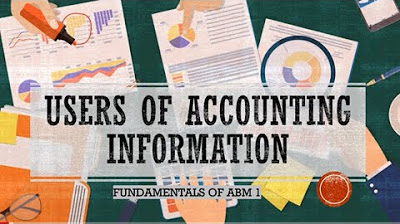External and internal Strategy analysis (Antonio Ghezzi)
Summary
TLDRThis script delves into strategic business planning, emphasizing the importance of understanding both external and internal environments. It explains how market structure, from monopolies to perfect competition, influences industry attractiveness and company performance. The script introduces SWOT analysis, a foundational framework for identifying a company's Strengths, Weaknesses, Opportunities, and Threats, which is crucial for formulating effective business strategies and achieving competitive advantage.
Takeaways
- 🌐 Formulating business strategy requires understanding both external and internal environments.
- 🏢 External environment includes industry structure and macro-trends affecting the industry.
- 👥 Market structure, such as monopoly or perfect competition, influences industry attractiveness.
- 🌟 Opportunities and Threats are identified from the external environment's impact on the company.
- 🏭 Internal perspective focuses on company values, goals, structure, systems, activities, resources, and competencies.
- 💪 Strengths and Weaknesses are key to a company's competitive advantage or disadvantage.
- 📈 Strategy analysis is crucial for understanding the sources of profitability and performance.
- 📊 Market attractiveness can be measured by the average profitability of players in the industry.
- 🔍 SWOT Analysis combines external and internal analysis to assess a company's competitive position.
- 📚 SWOT was developed in the 60s starting from the work by Albert Humphrey at Stanford and later modified.
- 🛠 SWOT is a simple, compact tool used by executives and managers to support strategy formulation.
Q & A
What are the two perspectives considered when formulating a business strategy?
-When formulating a business strategy, two perspectives are considered: the external perspective, which includes the set of competitors and determinants of industry structure, and the internal perspective, which involves the company's values, goals, organizational structure, systems, activities, resources, and competencies.
How does the number of competitors in a market affect its structure?
-The number of competitors in a market determines its structure. A market with only one company is a Monopoly, while an increase in the number of competitors aligns the industry structure towards perfect competition, characterized by zero economic surplus and lower attractiveness.
What are the potential impacts of the external environment on a company?
-The external environment can impact a company either positively or negatively. Positive impacts are labeled as Opportunities, while negative impacts are considered Threats.
What are the key elements of a company's internal perspective?
-The internal perspective of a company includes its values, goals, organizational structure, systems, activities, and resources and competencies, which can be sources of competitive advantage or disadvantage.
Why is strategy formulation important for a company's performance?
-Strategy formulation is crucial for a company's performance because it is inherently related to the notion of performance, with different strategies potentially leading to success or failure for companies in the same industry.
How is market attractiveness measured in terms of economic performance?
-Market attractiveness is measured as the average margin or profitability enjoyed by the players operating in the market.
What is the significance of analyzing both the external and internal environments in strategy formulation?
-Analyzing both the external and internal environments is significant as it allows strategists to uncover the sources of profitability and performance, affecting a company's ability to achieve and sustain a competitive advantage.
What is SWOT Analysis and what does it stand for?
-SWOT Analysis is a strategic framework used to identify a company's Strengths, Weaknesses, Opportunities, and Threats. It is an acronym for these four elements and is used to provide strategic directions for structuring strategic analysis.
Who developed the SWOT framework and what was its original model called?
-The SWOT framework was developed from the work by Albert Humphrey at Stanford, and its original model was called the SOFT model.
How has the SWOT framework evolved since its inception?
-The SWOT framework evolved from the SOFT model, which was later modified by Urick and Orr in 1964, replacing 'Satisfactory' with 'Strength' and 'Fault' with 'Weakness', leading to the SWOT framework used today.
Why is SWOT Analysis widely used by executives and managers?
-SWOT Analysis is widely used by executives and managers because it is a simple, compact, and unified tool that provides a good strategic summary and is efficient for expository and communication purposes.
Outlines

Esta sección está disponible solo para usuarios con suscripción. Por favor, mejora tu plan para acceder a esta parte.
Mejorar ahoraMindmap

Esta sección está disponible solo para usuarios con suscripción. Por favor, mejora tu plan para acceder a esta parte.
Mejorar ahoraKeywords

Esta sección está disponible solo para usuarios con suscripción. Por favor, mejora tu plan para acceder a esta parte.
Mejorar ahoraHighlights

Esta sección está disponible solo para usuarios con suscripción. Por favor, mejora tu plan para acceder a esta parte.
Mejorar ahoraTranscripts

Esta sección está disponible solo para usuarios con suscripción. Por favor, mejora tu plan para acceder a esta parte.
Mejorar ahoraVer Más Videos Relacionados

CH - 2| PART- 3 | DEVELOPING MARKETING STRATEGIES AND PLANS | HPSC PGT COMMERCE 2023, IBPS SO , NET

Environmental Scanning Techniques , SWOT, ETOP, PESTEL, QUEST, business environment, micro and macro

Organization and Management Lesson 4: Environmental Scanning

2 lingkungan internal binis, eksternal bisnis dan peranan lingkungan bisnis

Lingkungan Bisnis

FABM1: Users of Accounting Information INTERNAL & EXTERNAL. BAKIT BA NILA KAILANGAN ANG FS??
5.0 / 5 (0 votes)
